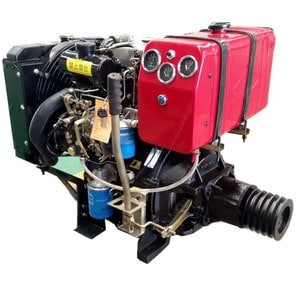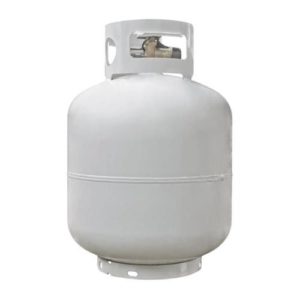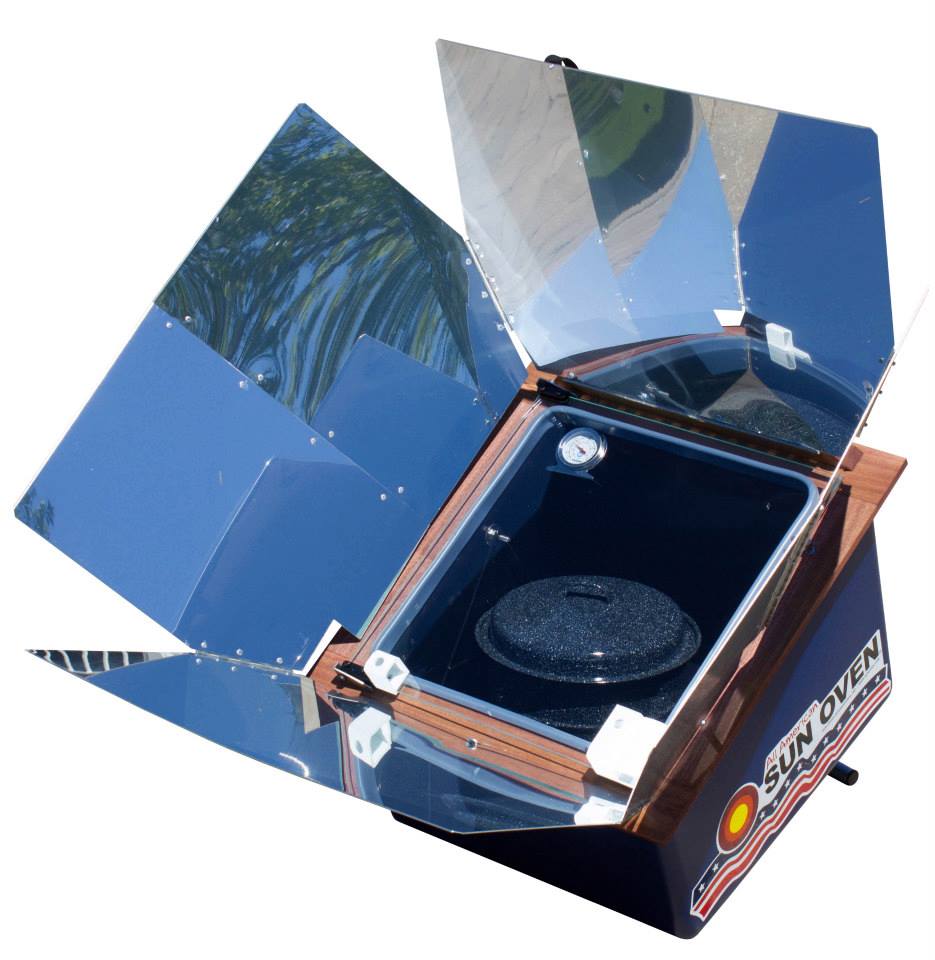Table of Contents
Have you every thought about where you would take your family in the event of a natural or man-made disaster? The best way to be prepared is to create a home prepping list.
I think this is a scenario we have all played out in our minds: disaster has struck, chaos has ensued, and now we need a place to keep our loved ones alive and well. Some people have a relocation plan in mind (this is not my first recommendation), others are building shelters on land specifically for this purpose, and some will choose to stay put on their current property.
There are many variables that will affect one’s decisions about where to go, and I’ll discuss this more in another post. In this post I am going to talk about what it is going to take to survive and thrive in any location, whether you decide to relocate, build, or stay put.
No matter the disaster scenario that we might face in the future, we all want to have the best shot at being able to provide for as many people as possible. If you are not prepared, you will be a part of the problem rather than the solution.
When it comes to outfitting your shelter with life sustaining needs, I am going to target three areas: power, cooking, and sanitation. I have found that when people are trying to prepare their shelter, these areas are either overlooked, or so overwhelming that one can’t figure out what to do.
As an engineer who loves to analyze things, make comparisons, and pick the best tool for the job, I have broken each of these areas into solutions that will start simple and progress to the more complex.
In the power section I will compare storage and resupply solutions in a grid down situation. For cooking, I will share simple and effective ways to cook and preserve the food we have stored or plan to harvest (don’t forget to read my post on food storage). The topic of sanitation will revolve around the ability to produce the more elusive prep: hot water.
Power
Fuels can be considered the foundation for power production, and fuel storage is the topic we will now delve into. Here is a detailed some fuel storage options.
Where will my power come from?
Propane
propane can be a great choice for fuel storage as it can be stored indefinitely, has a high BTU rating, burns clean, and leaves engines cleaner than other fuel types. I have a 1970 propane generator whose inner workings look like the day she rolled off the assembly line.
Propane has been one of the fuels of choice to compliment alternative energy sources such as solar and wind, and chosen by many for the variety of preparedness solutions it offers. Below is a list of propane devices and appliances that I see used:
- generators
- refrigerators
- freezers
- lighting
- water heaters
- ranges/ovens
- clothes dryers
Propane can be such a welcome fuel source when the grid is down and you can just reach over and turn a knob to light your stove or heat your water. I tell folks to consider their propane storage like money in the bank: use other means such as wood or solar to keep that propane in “savings”.
Gasoline
Gasoline storage is smart for short term situations. It’s always in high demand for vehicles, generators, and chainsaws when the power goes out. Whether you need to leave the premises or clear out debris left from a storm, you should keep gasoline on hand.
I have found that you can store gasoline for 2 years, but the quality begins to degrade immediately. There are, however, additives like Pri-G that can slow the fuel from breaking down.
I prefer and advise others to store this fuel in a shed or building unattached to the home, as it is highly flammable.
Diesel
When it comes to getting work done, it is hard to beat a diesel. One gallon of diesel is equivalent to roughly 500 man-hours of labor. CSX trains averaged 468 miles per gallon of diesel per ton in 2009.

Remember, newer engines are not as forgiving as older ones when it comes to varied types and fuel conditions. Also remember to keep water out of your fuel storage tank! I like storing diesel in an elevated, slightly angled tank as it is the easiest way to drain off the water that might enter the tank, since water settles on the bottom.
Kerosene
A very practical fuel to store is kerosene. There are several reasons for this:
- Kerosene is versatile – it can be used for heating, lighting and cooking.
- Kerosene is an oil, not a volatile fuel, so it is much safer to store and not explosive.
- Kerosene can be stored for many years without significant degradation.
- Kerosene is readily available and can be purchased in volume at reasonable prices.
- Kerosene is a dense store of energy – 1 gallon contains about 135,000 BTUs of energy (almost 50%more than a gallon of propane)
Wood
When I set out toe “prepare” for whatever came down the pike, I set a goal that I would maximize two abundant resources on my property: water and wood. I knew that if these two resources were managed properly that I would have a well-grounded preparedness plan.
Wood is often only thought of as a resource for heating homes and cooking, but wood can also be used to power engines and make electricity! Not only in the burning of wood can you pursue energy independence, but you can also use it for construction purposes.
How will I generate power?
Now that we have covered a variety of fuels that you can store for troubled times, let talk about how they can be used to produce life sustaining energy if the grid is down for an extended period of time. We’ll start with human powered devices and work our way up to larger hybrid systems.
Hand cranked generator
I like to have many ways to make power, and one that most everyone can utilize is a hand cranked generator. Hand cranked generators can be used to power flashlights, radios, medical devices, RV pumps, phone chargers, laptops, and cordless tool chargers. They are a good solution for an urban pepper that cannot use solar or gasoline powered.
Disadvantages
- The sustainable power output is only about 150W per hour
- The battery needs to be maintained by a battery tender or solar charger
Thermoelectric Generators
Another area of “small” power generation is called energy harvesting. It is simply using a heat differential to produce a DC voltage. The most practical application of this is sometimes seen in fans that sit on top of wood stoves.
Thermoelectric generators have made their way to the Prepper market as either part of a gasification stove or as an accessory that can take heat and charge a cell phone. The PowerPot is one such device. With these devices, the colder the climate the better; as cold air or water makes for a larger temperature differential, improving the efficiency of the generator.
We offer a few other thermoelectric generators in our online store.
Fuel Powered Generators
The first items to leave the shelves after a severe storm are generators. Just as there are various types of fuel that can be stored, there are different types of generators that use these fuels. It’s important to understand what type of generator you should be using to prevent harm or injury to yourself or others.
Questions you should ask before buying a generator:
- What is the generator’s wattage capacity and will it support your needs, including startup surge power required by some equipment?
- Does it have enough outlets to plug in all of the items you want to power?
- What type of fuel does it use?
- How large is the fuel tank and how many hours of operation will it provide?
- Is the generator easy to move around?
- What accessories will I need to run the generator (fuel, extension cords, transfer switches, etc.)?
Disposable Portables
This is what I call the “no name” generators that get purchased by the thousands when there is a storm. They are usually very loud, small, portable units ranging from 1,000 watts to 10,000 watts. They are very handy when you are in a bind and need to keep a few critical appliances running.
Make sure you always follow the guidelines for gasoline storage for these generators. If getting water our of your well with a generator is one of your objectives, make sure you size the generator correctly. You need to size a generator based more on matching the surge rating needed for starting the well pump rather than the power needed to run the pump.
Residential Standby Systems
An emergency home standby generator system can automatically restore your power to your house in 20 seconds. I am a fan of the diesel generators that run at 1800 rims because they typically have the longest service life. They also allow you more fuel options.
I have a diesel generator setup that has provided clean electricity for over 1600 hours (over 2 months worth) of 24/7 power. During one ice storm, I ran my diesel generator for 7 days straight. It is a 2 cylinder diesel running at 1800 rpms.
Batteries
Batteries are storage devices, but I have them sandwiched here between generators and photovoltaics because they are the two most widely-used methods for recharging batteries.

Lithium ion batteries are very much a part of our gadget world today, being found in cell phones, laptops, power tools, and electric vehicles. I have found external lithium ion battery packs very handy to charge or run anything you can plug into them.
On a much larger scale, batteries are also often used as back-up storage for a photovoltaic (solar) system. I could write an entirely separate article (…maybe I will) on battery configuration and connections, but for the purposes of this article, I’m just going to give information that will help you choose between 12V, 24V, or 48V battery banks (the most common configurations for wind and solar).

- 12 volts is simplest and most standard, used in vehicles, RV, and boats. If you want a small simple power system, 12 volts will probably be easiest. You can use 12 volt DC directly in very small systems, adding 120 volt AC with an inverter.
- 24 volts battery systems have some technical advantage. If you think you will have more than 500 watts of solar modules, consider 24 volts. If you are using 12 volt solar modules, 24 volt wires can run longer distances. Consider using larger, higher voltage solar modules with an MPPT charge control. Most of your power will be changed to 120 volt AC power. Voltage converters are available to run 12 volt DC equipment from 24 volt batteries.
- 48 volts has great advantage if a longer wire run is unavoidable to reach a wind or hydro turbine. Larger, more powerful inverters are available in 48 volt. Typically a larger system capacity is the advantage of higher voltage. 48 volt battery banks can have fewer strings. Fewer strings mean more even charging and discharging of batteries. Voltage converters are available to run 12 or 24volt DC equipment from 48 volt batteries.
Photovoltaics (Solar)
Solar energy is a growingly popular means of producing off-grid electricity. Below is a comparison of the different types of solar systems out there.
- Portable-systems, are ideal for someone who wants to have backup power but cant have the system be visible for either security or HOA restrictions. These are also great to take with you if you have an RV.
- Grid-Tie – the most common and simple solar system, but the most useless in a grid down situation.
- Grid-tie Battery Backup – Grid tie system with storage capabilities. This is the system we suggest for folks wanting to have power when the grid power is interrupted. I prefer this type of system because while the grid is working, it i used to keep the battery banks fully charged when solar power is not producing.
- Stand Alone Systems – these run with no connection tot he utility grid. Many times there are also called hybrid systems since they have other backup sources such as wind or a generator.
If you need help planning a system to meet your site’s needs and balance of system, be sure to call us or request a consultation on our site!
There are plenty of other power re-supply options such as wind, hydro, and gasification, but I am going to move onto cooking for now.
Cooking
When I have the privilege to consult on-site and analyze someone’s level of preparedness, I typically find that if a person has stored enough food for the timeframe they are preparing for, they rarely have a means to prepare, heat, or cook the food.
I have seen a year supply of food on the shelves alongside a few bottles of Coleman fuel and a camp stove! Cooking outside on a campfire is not only unrealistic for all of your meals, but it increases your risk for respiratory disease due to bad air quality – the number two cause of illness in the world.
There are so many stoves and widgets out today for boiling water and cooking food. I have at least 12 different alternative cook stoves and have put them through their paces.
What are my off-grid cooking options?
Wood Cookstove
I have made it a priority that no matter where I live, I will have a wood cookstove. I tell people that if they have a hand pump for the well and a wood cookstove in their shelter, then they don’t need much else! Wood Cookstoves serve many purposes including heating your shelter, cooking food, and heating water (which is important for sanitation, the next topic). My favorite wood cookstove is the Pioneer Princess. A wood cookstove should be outfitted with a large as possible firebox, oven, water reservoir, warming closet, and water coil, all which are options with the Pioneer Princess.
Sun Oven
This solar oven is a box with fold out reflectors. It captures energy and concentrates it on the food and requires no external power to operate. The disadvantage is repositioning the oven to collect the maximum solar energy. They work great in places with high solar output, like the Southwest US. Check out solarchef1 on YouTube!
Fuel Stoves
There are many inexpensive multiple burner stoves that use propane. This is a nice advantage to cook two or more pots of food at once, but your supply of fuel may be limited. But because of the efficient clean burn, propane stoves are safe to use in the house.
Coleman makes a whole line of duel fuel which burn gasoline or Coleman fuel. I’m just not a big fan of “cooking on gas.” Gasoline scares me when it comes to being inches from an open flame.
Rocket Stoves
These are sturdy biomass stoves requiring no power to operate. They burn very little fuel and are very clean, reducing carbon monoxide emissions. They can be constructed by stacking bricks in the appropriate configuration, or purchased on our site. The latest and greatest stoves use a primary and secondary combustion to further reduce consumption and CO emissions.
Gasifiers
My favorite biomass stoves are of the TLUP (top lift up draft) design! They are easy to load, have less emissions than rocket stoves, and burn the least amount of fuel of any biomass stove. We have used these for cooking, grilling, and canning. The only disadvantage is that forced air is required, so a small amount of power (less than 3 watts) is needed for the fan.
Grills and Smokers
Heavy ceramic grills and smokers like the Green Egg are also sustainable biomass cooking solutions. Making your own hardwood charcoal is fairly simple:
- place wood chips in a closed metal container and put it into a fire.
- Wait until no more gas is expelled from the edges of the container.
- Let it cool.
- While you are cooking one meal, you can be preparing your charcoal for the next meal.
Cookware
Have a variety of cast iron cookware.
- Griddles sit nicely on grates.
- Frying pans can be placed directly over fire.
- Dutch ovens can hang or sit directly over a fire and will bubble away for hours.
If you have a decent population to cook for at your retreat, these may need to be larger than what you now use for your family.
One of the nice things about cast iron is it does not show the soot and they can be reconditioned with a wire brush and some steel wool. Once brushed down, they can be oiled – I like solid shortening – and reheated to make a finish. And then you have a new piece of cookware.
Outdoor Kitchens
Summer kitchens are great when you don’t have air conditioning and your house is already hot. When the harvest comes in, you need room to can and a way to dissipate the tremendous amount of heat generated while canning. Sometimes you can outfit your porch with stoves, equipment, and tables to prep, prepare, and preserve your food.
Sanitation
Sanitation is a dirty subject and therefore often overlooked. Hot water is an essential part of this equation, whether it is for food preparation, personal hygiene, or laundry. I will also address garbage and waste disposal.
Without hot water at the shelter, you are in trouble. I myself have a wife, 4 children, and a mother-in-law who are looking to me to have hot showers and hot water on demand! So how can we keep everyone clean and happy?
How can I heat my water?
Solar Hot Water
I currently run my home’s hot water supply on a solar hybrid system and pay an average of $3 per month to the grid for hot water, and could easily run it completely off-grid in an emergency situation.
Active solar hot water systems use a PV panel to power a pump that moves liquid between the collector and the storage tank. It’s a simple system that is easy to install and requires no pumps, pipes, batteries, inverters, charge controllers, etc. Just a water tank and a solar panel. However, we have found that best practice is to also integrate a Solar Direct Hot Water Controller into the system, this is what I use in my home (see my video here).
This controller provides MPPT, which maximizes your system’s use of the sun and keeps your system running on rainy or cloudy days. You can try hooking up your panels direct, but without MPPT, you will get little return of heat for your investment and run into other problems.

There are also portable solar showers that rely on the direct heating of the sun to warm the water in a bladder, which is elevated so that a person can take a conservative shower.
Tankless Heaters
Tankless or on demand water heaters use a combination of water pressure, propane, and an igniter to provide instant hot water. The size of the heater can be scaled to meet your needs. I really like to Ecotemp brand for its extensive line of indoor and outdoor units at a great price point; they even have battery operated units.
Thermo Siphon Woodstove Coil
As mentioned earlier, I recommend that every cookstove be outfitted with a stainless steel water coil. Here’s how it works:
- This coil becomes the heat exchanger, moving heat from the wood fire into the cold water.
- As the water heats up, it ruses in the coil to an elevated tank.
- The colder water in the tank drops to the bottom of the tank and into the coil.
- As long as there is heat applied to the coil and the system is full of water, the circulation will begin.
This system can be plumbed into the domestic water system. Pressure relief valves much be installed on these systems as high temperatures and pressures can be produced in the coil.
Wood Boilers
A wood boiler (biomass boiler) is a great way to heat a home, and the heat from hot water is one of the most appealing forms of heating a home. The hot water can also of course be used to heat a shelter’s domestic hot water through a water-to-water heat exchanger. We use them on standard water heaters without pumps and employ the thermo siphon process mentioned above.
Heat Pump Water Heaters
There are several heat pump water heaters on the market today. One that I like is called a Geyser and can be retrofitted to an existing water heater. It runs on 120 volts, so can be easily run off of a solar or alternative energy system. We find this option to be a lot less expensive than the solar hot water heating system.
Portable Water Heaters
There are portable hot water heaters for the camping market that can come in real handy when there is a disaster. Ecotemp and Zodi make portable hot shower units.
Hot Water Bags
There are Swiss Army water storage bags that hold 5 gallons of portable water. You can hang them up after they have been in the sun for a while, and it makes for a real nice hand hot water washing station.
Radiators
Remember those old cast iron radiators in the old school building? Well, they’re back! If you are trying to heat your shelter with hot water, these cannot be beat. Besides not needing a fan to heat the room, they also have non powered thermostatic thermostat for controlling room temperature.
What else do I need to know about sanitation?
While hot water is essential for sanitation, there are also many other factors that contribute to a safe and healthy shelter. Below are some things to keep in mind:
- Food requires spotlessly clean areas previously prepared with soap and clean hands!
- Do not allow cross contamination of meat/blood with any foods that might be consumed raw (my wife uses multiple, color-coded cutting boards)
- Soap and water alone destroy half of all disease-causing germs (soap is easy to store, long-lasting, and cheap)
Sanitation is also important for psychological reasons
Personal hygiene and sanitation are also helpful for morale. We are used to being clean people; when we are dirty, and it doesn’t take long, it has a profoundly negative psychological effect on us. This is also true with clean clothes, which give us a sense of well-being and good social function. It might seem like a silly reason to stay clean now, but in a time of crisis, we will need anything to boost our morale!
There are many ways to wash clothes, but we are so used to the convenience of a washer/dryer combo. Five gallon buckets with lids and toilet plungers make a great washing system!
One bucket is used for washing, and one is used for rinsing. The key to a successful off-grid laundry setup is the wringer! Having a good clothes wringer will remove most of the water from the clothes before being hung on the clothes line. A heavy duty commercial mop bucket wringer works extremely well for this task.
What can I do with my garbage?
The day after Christmas 2013, I went to the recycling station along with everyone else in the area. The compactor could net keep up with the sheer volume of trash. What would it be like after a month without transfer trucks running?
Be prepared to handle your own trash by burning or burying what you can. I have pre-dug a good size hole on my property with my tractor just for this purpose. I am not using it now, but if the time comes, then I will be glad I do not have to do it by hand. The hole is safe with sloped sides, which prevent injury if someone goes into it.
Where can I dispose human waste?
If you are fortunate to have your own septic system, then human waste disposal will be status quo. If the sewer system is no longer working, pray that you are not located in the lowest area, as waste always flows downhill! You dwelling could become the local septic tank.
Only through careful planning can your house be isolated from the system via valves or plugs.
More primitive ways to deal with human waste are to use outhouses. Porta-potties can be quickly converted into an outhouse, and we have even mounted them to a plastic pallet that could be moved to a new location once the hole is filled.
When it comes to the actual hole, a combination of lyme, dirt, and ash can be used to cover waste and minimize the smell and spread of germs.
Feminine products that are disposable can be burned. There are some plastic products such as the DivaCup that are meant to be washed and reused. If nothing is left, cotton shirts can be torn and layered, and plastic wrap can be used as a barrier to prevent breakthrough.
Diapers, while they can be burned, are probably better in the ground buried. Fecal matter shouldn’t be aerosolized.
Conclusion
As you can tell, there are so many things to prepare for before a crisis occurs. I hope that it has at least motivated you to start on one or two projects that could really enable you to weather a storm or provide shelter to someone less fortunate


















